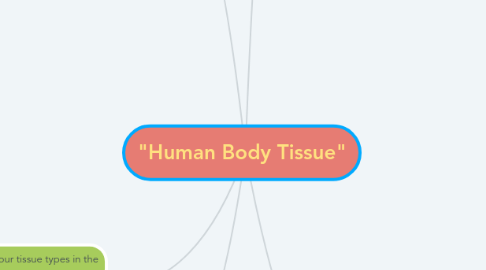
1. There are four tissue types in the human body.
1.1. Each of these tissue types can differ based on the requirements of the organ they are part of
2. NERVOUS TISSUE
2.1. CONCEPT
2.1.1. consists of the central nervous system (CNS), and the spinal cord, and the peripheral nervous system
2.2. FUNCTION
2.2.1. Nerve cells are responsible for transmitting signals.
2.3. DISEASES/ILNESSES
2.3.1. Blood vessel disorders in the brain
2.3.2. Tumors, benign and malignant (cancer)
2.3.3. Degenerative diseases
2.3.4. Disorders of the pituitary gland
2.3.5. Epilepsy
2.3.6. concussions and brain trauma
2.3.7. Movement disorders
2.3.8. Demyelinating diseases
2.3.9. Mental disorders
2.3.10. Spine disorders
2.3.11. Infections, such as meningitis
2.4. TREATMENT
2.4.1. Interventional neuroradiology treatments include:
2.4.1.1. Medicines, possibly given by a drug pumps
2.4.1.2. Deep brain stimulation
2.4.1.3. Spinal cord stimulation
2.4.1.4. Spinal surgery
2.4.1.5. Rehabilitation/physical therapy after brain injury or stroke
3. MUSCLE TISSUE
3.1. CONCEPT
3.1.1. Muscle tissue is responsible for the movement of the body, with specialised cells that have the ability to contract.
3.2. TYPES
3.2.1. There are three types of muscle tissue: skeletal, smooth and cardiac.
3.3. FUNCTION
3.3.1. Skeletal muscle ( voluntary movements), Smooth muscle (contractions involuntary), Cardiac muscle (contractions).
3.4. DISEASES/ILLNESSES
3.4.1. atrophy
3.4.2. muscular dystrophy
3.4.3. Cramps
3.4.4. hypertrophy
3.4.5. Tetany
3.4.6. fasciculation
3.4.7. McArdle disease
3.4.8. Muscle weakness
3.5. TREATMENT
3.5.1. restrict exertion to tolerable limits,
3.5.2. surgical procedure.
4. CONNECTIVE TISSUE
4.1. CONCEPT
4.1.1. Connectivetissues are an important structural component in the body, and one of their main functions is to hold and connect tissues in the body to one another.
4.2. TYPES
4.2.1. Loose connective tissue,Cartilage, Adipose tissue, Fibrous connective tissue, Bones.
4.3. FUNCTION
4.3.1. main functions is to hold and connect tissues in the body to one another.
4.4. DISEASES/ILNESSES
4.4.1. Rheumatoid Arthritis (RA)
4.4.2. Scleroderma:
4.4.3. Granulomatosis with Polyangiitis (GPA, formerly called Wegener’s):
4.4.4. Churg-Strauss Syndrome
4.4.5. Systemic Lupus Erythematosus (SLE)
4.4.6. Microscopic Polyangiitis (MPA)
4.4.7. Polymyositis/dermatomyositis
4.4.8. Mixed connective tissue disease (MCTD), also called the Sharp syndrome:
4.4.9. Undifferentiated connective tissue disease(s)
4.5. TREATMENT
4.5.1. The treatments will vary depending on the person and the disease
4.5.1.1. Vitamin supplements
4.5.1.2. Physical therapy
4.5.1.3. Medications
5. EPITHELIAL TISSUE
5.1. CONCEPT
5.1.1. Epithelial tissue (what the skin is made of) consists of cells that line organs, cavities within the body, and the surface of the body.
5.2. TYPES
5.2.1. simple squamous, simple cuboidal, simple columnar, transitional, stratfied squamous, stratfied cuboidal pseudostratified columnar.
5.3. FUNCTION
5.3.1. Epithelial tissue forms a protective barrier around organs and can also be involved in secretion
5.4. DISEASES/ILNESSES
5.4.1. Acne
5.4.2. Atopic Eczema
5.4.3. Atopic Dermatitis
5.4.4. Contac Dermatitis
5.4.5. Psoriasis
5.4.6. Sunburn
5.4.7. Sweating Disorders
5.4.8. yeast infections of the mucous membranes
5.5. TREATMENT
5.5.1. Corticosteroids
5.5.2. Immunomodulators
5.5.3. Antimalarial drugs
5.5.4. Calcium channel blockers
5.5.5. Methotrexate
5.5.6. Pulmonary hypertension medications.
